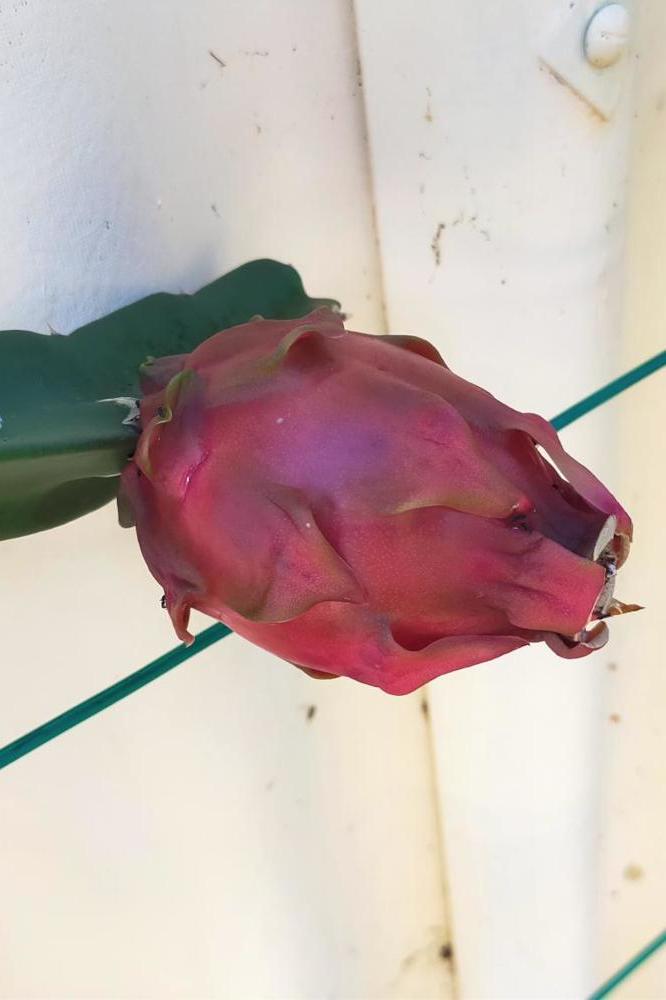Overview
Hylocereus setaceus ×, cv. Malaysian Purple
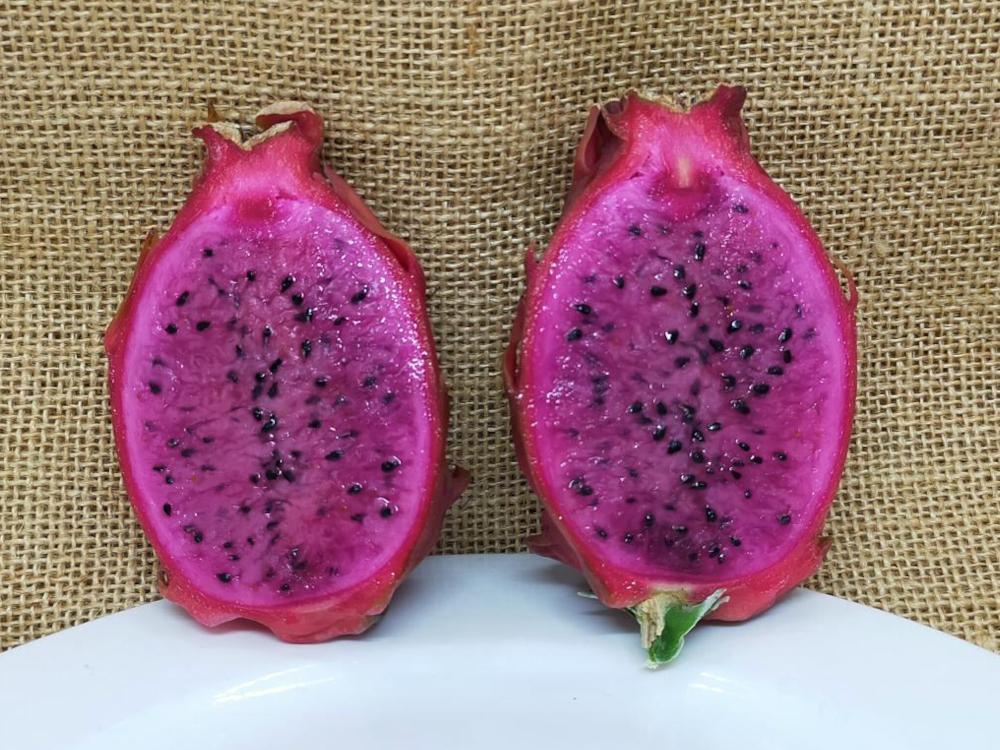
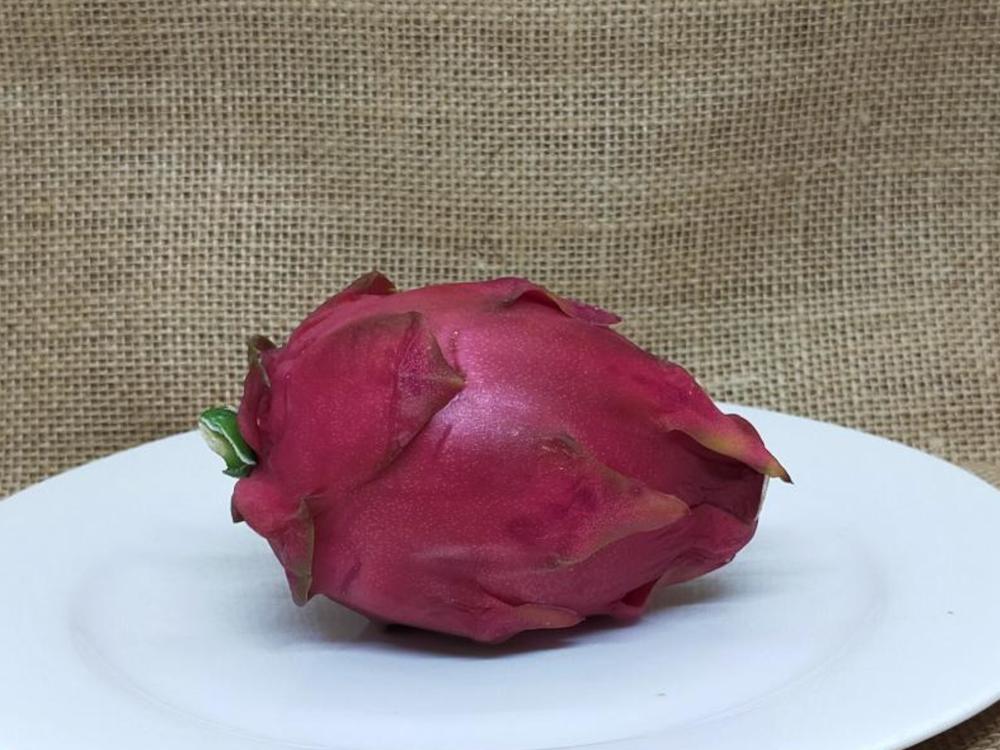
Other names: Malay Purple
Pollination: self-fertile
Malaysian Purple was a bit of a mystery to me when I bought the plant, as I could find next to no information about it on the web. The plant looks similar to both Sugar Dragon and Pink
Panther, though the branches are thicker and even more succulent, so some sort of Hylocereus setaceus hybrid is my best guess as to its origins. I have found the growth to be steady but not aggressive, though the plant was able to
bear fruit with little biomass compared to other
varieties.
Fruits
are
quite small, with a similar inside to Pink Panther, though it has a darker skin and more round shape. However, the fruit makes up for its small size with an incredible flavour; a mix of
berries and melon unmatched by any I have tried apart from maybe Pink Panther.
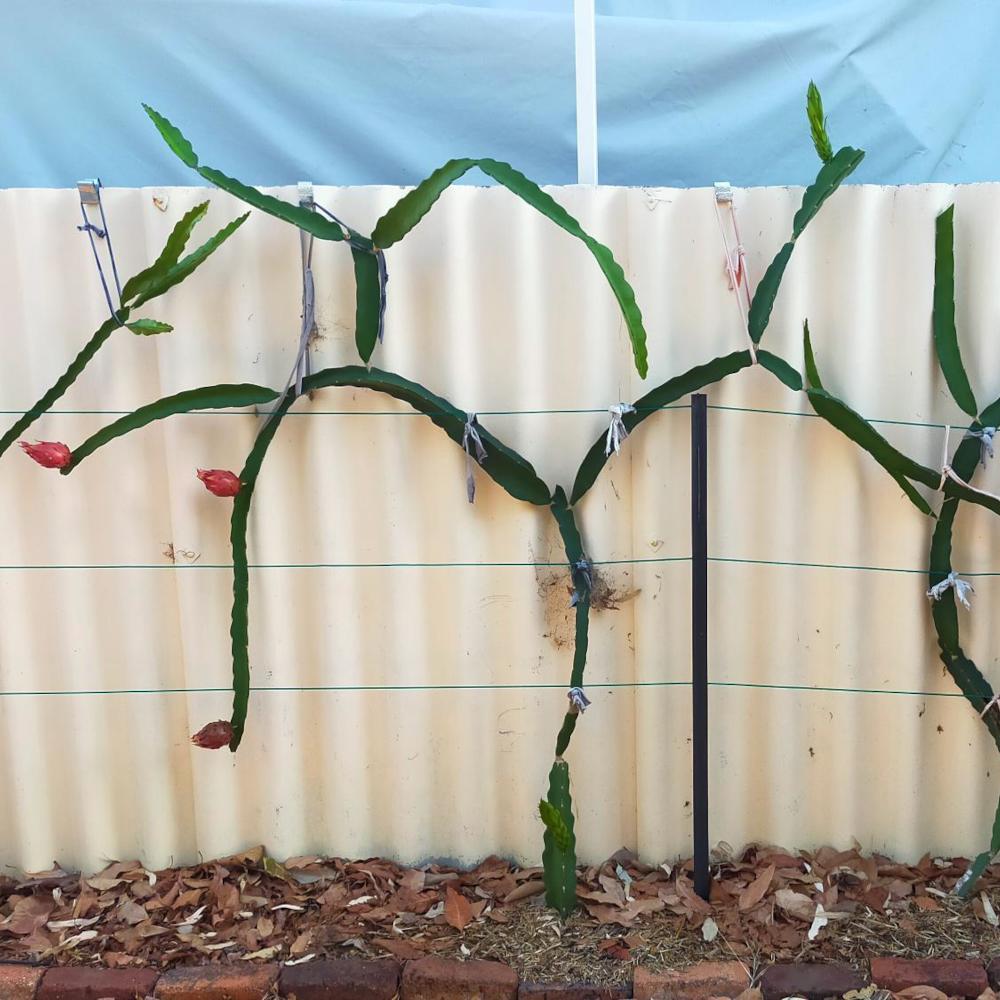
Buds
Malaysian Purple has so far been a prolific budder from both a very young age and small size. In fact, its first season saw so many buds that more than half aborted, so it seems to know its limitations without bud thinning. The buds are pretty standard though perhaps more cylindrical than usual in the development stage. A reasonable amount of sap is also produced.

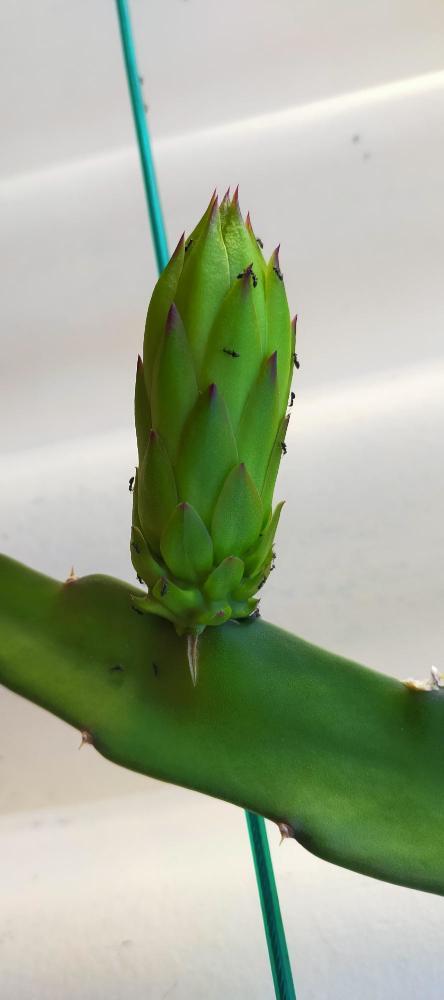
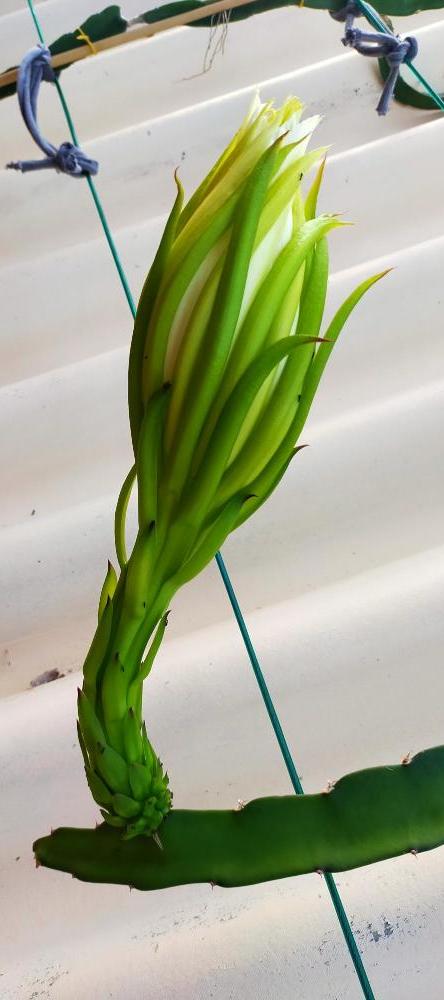
Flowers
This variety has very standard flowers. The stigma protrudes well away from the anthers, making self-pollination unreliable despites its fertility. Malaysian Purple produces modest amounts of pollen, and cross pollination does not seem to have much effect on fruit size or set.
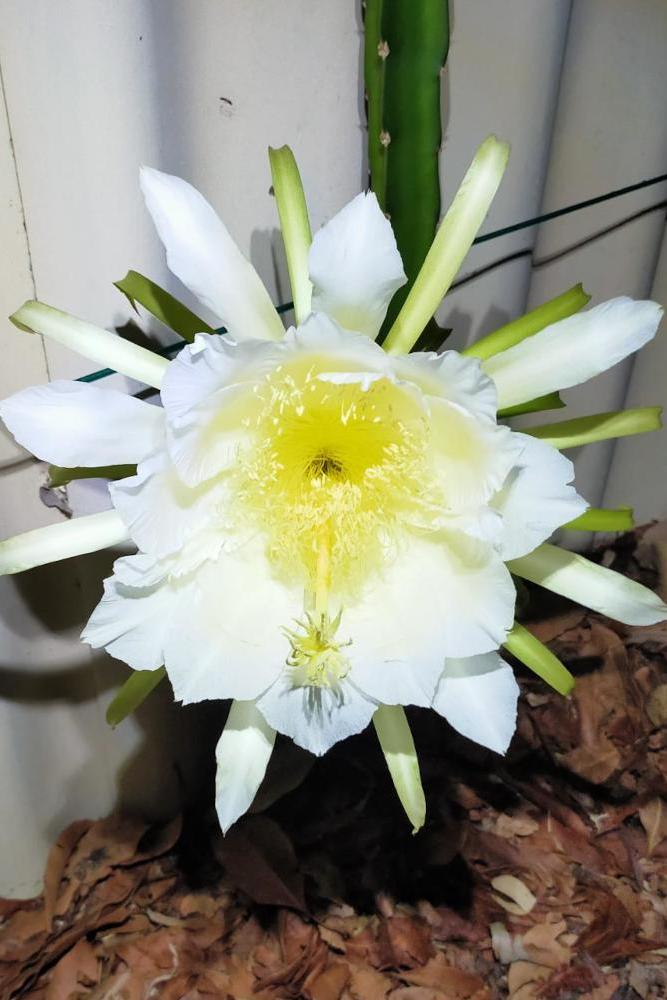
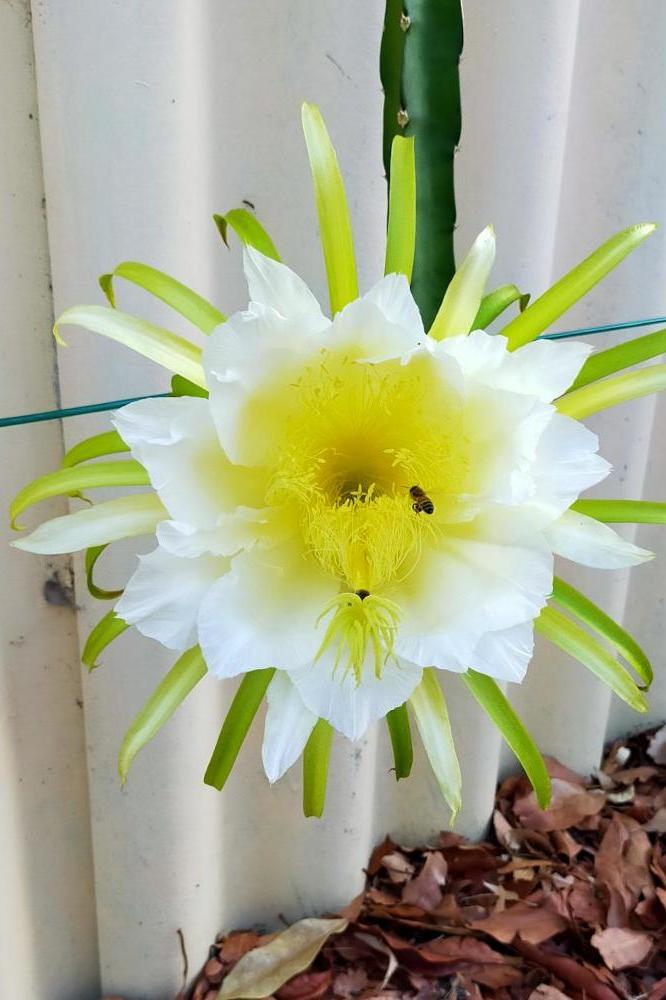
Fruit
The fruits of Malaysian Purple initially have quite long bracts in the green stage, shortening in the ripening process as the fruit plumps up. This variety takes longer to ripen than your typical dragon fruit varieties, though not too out of hand like Thorny Yellow. I see this as a positive anyway, as if buds occur at similar times for all varieties, there will be a staggered supply of fruits rather than having every variety ready at the same time.

